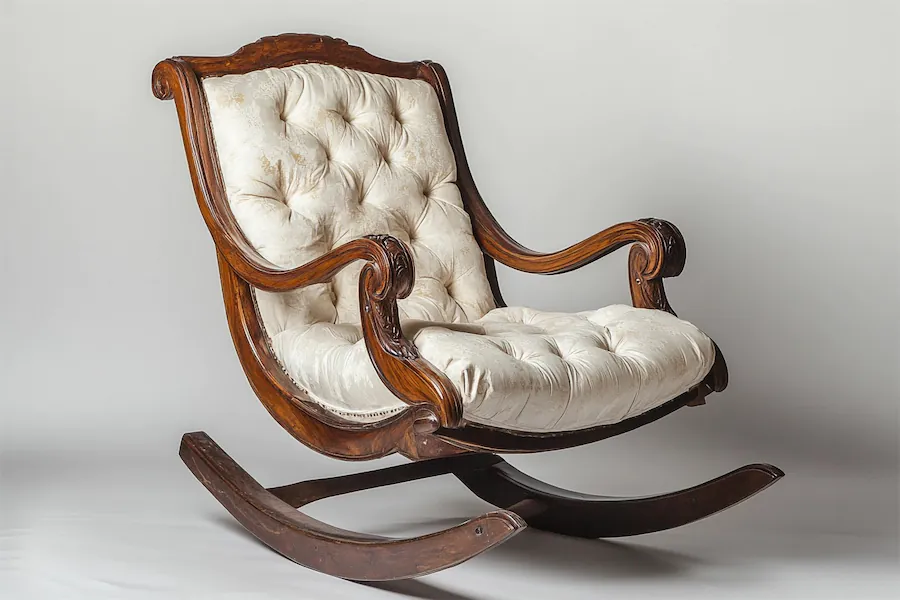Rocking chairs, with their distinctive curved rockers, have been cherished for centuries as symbols of relaxation and comfort. This article explores their history, key features, applications, considerations for selection, and enduring appeal.
History and Origins of Rocking Chairs
The exact origins of the rocking chair are somewhat ambiguous, but it is widely believed that its invention can be attributed to the craftsmanship of North American settlers in the early 18th century.
The term “rocking chair” first appeared in the Oxford English Dictionary in 1787.
Initially, these chairs were simple wooden seats with attached rockers, primarily used in gardens. Over time, they evolved into indoor furniture pieces associated with leisure and comfort. Notably, American industrialist Peter Cooper designed an iron-frame rocking chair in the 1830s, and German craftsman Michael Thonet created the first bentwood rocking chair in 1860, distinguished by its graceful shape and lightweight design.
Key Features of Rocking Chairs
Rocking chairs are characterized by several distinctive features:
- Curved Rockers: Two curved bands attached to the bottom of the legs allow the chair to rock back and forth.
- Variety of Materials: Commonly made of wood, but also available in metal, wicker, and modern composites.
- Design Variations: Include traditional ladder-back, Windsor styles, and contemporary designs with upholstered seats and backs.
- Ergonomic Comfort: The rocking motion can provide ergonomic benefits, promoting relaxation and reducing stress.
Applications of Rocking Chairs
Rocking chairs serve various purposes across different settings:
- Nurseries: Ideal for soothing infants to sleep, providing comfort to parents during feeding times.
- Living Rooms: Offer a cozy seating option for reading or relaxation.
- Porches and Gardens: Enhance outdoor spaces, allowing individuals to enjoy nature while gently rocking.
- Healthcare Settings: Utilized in hospitals and nursing homes to promote relaxation and reduce anxiety among patients.
Considerations When Choosing a Rocking Chair
When selecting a rocking chair, consider the following factors:
- Comfort: Ensure the seat and backrest provide adequate support; consider upholstered options for added comfort.
- Material and Durability: Choose materials suitable for the intended environment (e.g., weather-resistant materials for outdoor use).
- Size and Space: Measure the available space to accommodate the chair’s rocking motion without obstruction.
- Aesthetic Appeal: Select a design that complements your existing décor, whether traditional or modern.
- Functionality: Consider additional features such as reclining capabilities or matching ottomans for enhanced comfort.
Conclusion
From their early beginnings to modern interpretations, rocking chairs have maintained their status as timeless pieces of furniture. Their unique combination of functionality, comfort, and aesthetic appeal ensures their continued presence in homes and public spaces alike.
